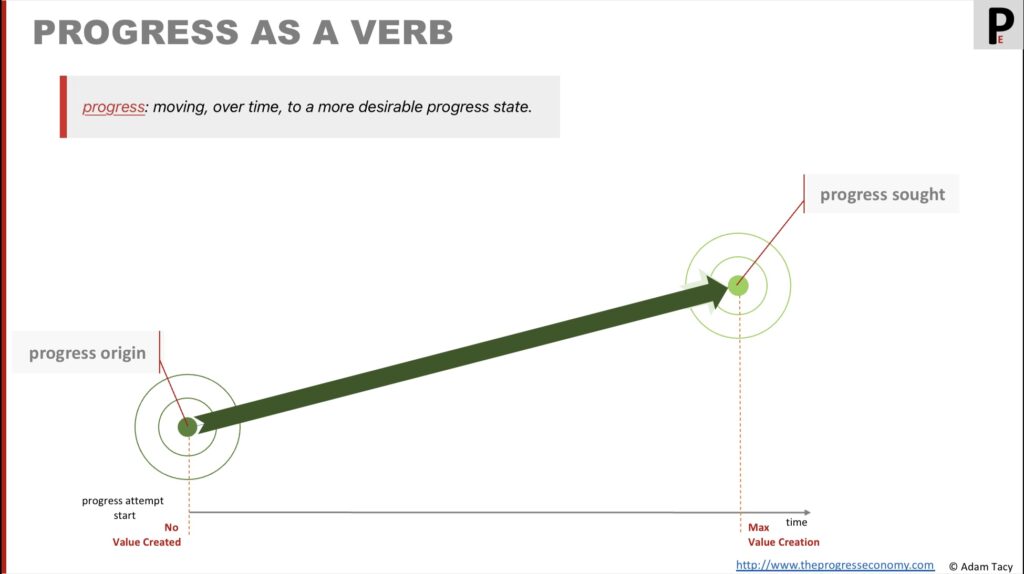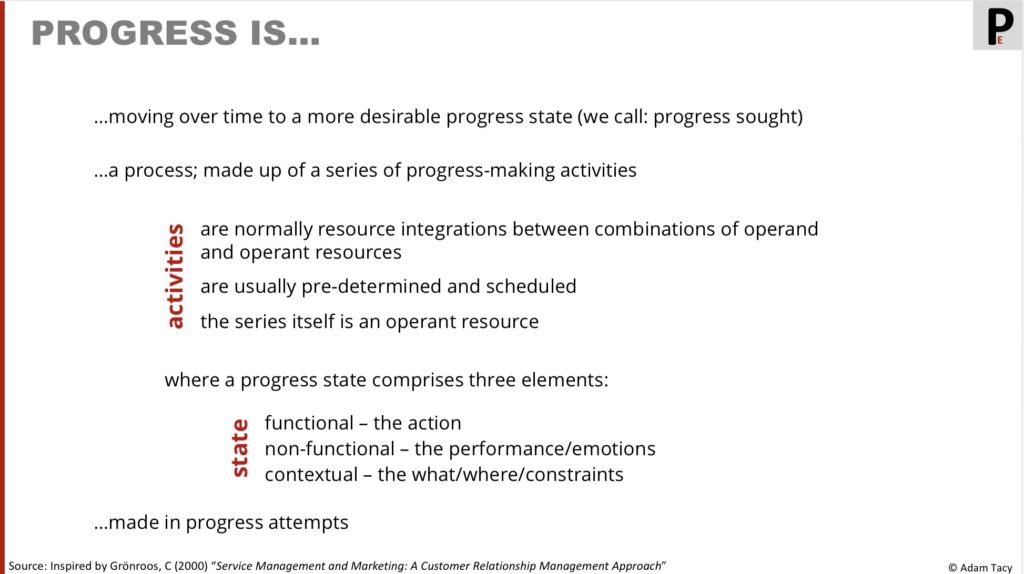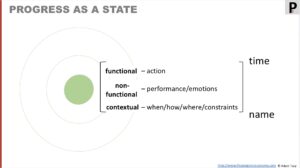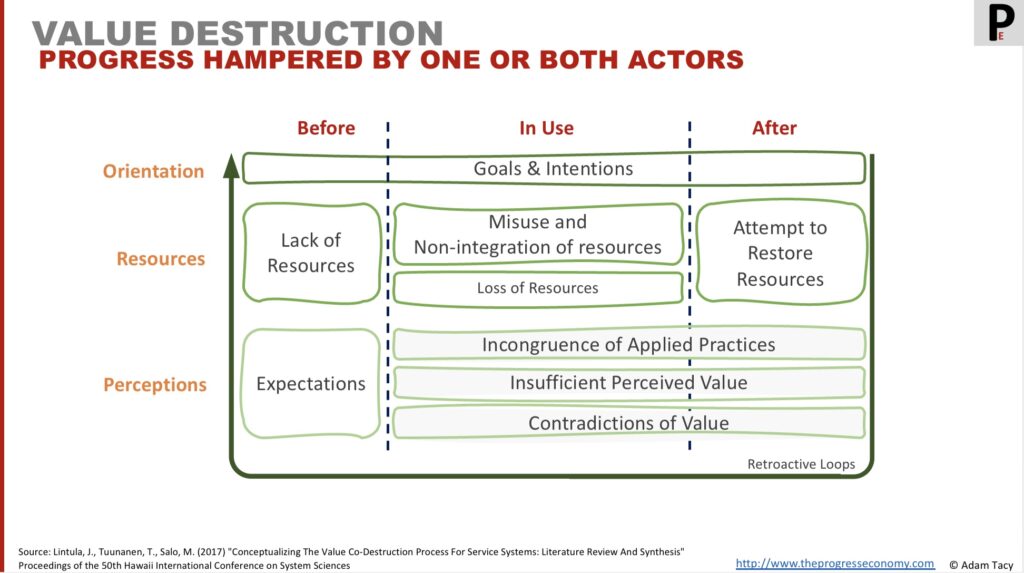What we’re thinking
Progress is a verb – a seeker moving over time from their progress origin to their more desired state of progress sought.
And since progress origin and progress sought are progress states, we can also think of progress as a state transition.
It is a journey a seeker can attempt on their own. Though more often, a lack of resource (for instance time, or skills, knowledge, strength,…) sees them engaging a progress proposition to attempt progress.
During that journey, we see value progressively emerging as a seeker moves from their progress origin (no value) to progress sought (max value has emerged). But to be meaningful to the seeker, emerged value needs to be recognised. A process akin to revenue recognition.
Innovation should focus on making it “better” for a seeker to get to progress sought.
Let’s get exploring!
Progress as a verb
Collins define the verb to progress as:
to move over a period of time to a stronger, more advanced, or more desirable state
Collins
It’s a definition that resonates with the progress economy, where individuals actively try to get to more desirable situations with all aspects of their lives. Whether it’s acquiring a new language, repairing a car, cooking a romantic dinner, analysing data for insights, hanging up a picture frame, and more, everyone is actively engaged in the pursuit of progress.
Let’s call those situations “states” and see that “more desirable state” effectively encompasses the notions of “stronger” and “more advanced.” Now we can simplify our definition as:
progress: moving over time to a more desired state
Using a couple of our named states (see progress as a noun), we can visualise progress as the following diagram:

Fundamentally, progress seekers look to progress from their current state – their progress origin – to their more desirable state of progress sought.
For practical reasons we usually consider particular aspects of progress in isolation.
Progress as a state transition
An alternate, but equivalent, way of looking at progress is to consider it as a state transition between progress origin and progress sought. We show this below:

Such a state transition diagram allows us to visualise other named states, such as progress reached and progress potential at any given time. Along with how any propositions progress offered aligns with progress sought.
Making progress
In the progress economy we see progress being made through progress attempts. For which we build on Grönroos’ definition of service:

Progress attempts are therefore a series of resource integrations activities framed within a decision process.
Seekers may attempt progress on their own. However, we observe that a lack of resources – for example skills, knowledge, tools, strength – often prompts them to engage progress propositions to attempt progress.
But there is some progress that, by convention, we find best not to make directly.
A note on (not) making contextual progress

A progress state consists of three elements: functional, non-functional and contextual progress. Whilst we can look to make progress in all three elements, we find it best to keep the contextual progress element fixed in an attempt. In other words, the contextual element of progress origin is the same as for progress sought.
What if we’d like to change the context? Well, it’s simpler to do that by considering what functional, or non-functional, progress would achieve that. Treating that change as a separate progress attempt.
For example, a context of “not knowing how to drive” gives a constraint on offerings where functional progress might be related to travelling. If the seeker wants to change context, they start a new progress attempt with “learn to drive” as the functional progress sought.
Relating to value
When considering progress as a noun we find that:
- zero value exists for the seeker at their progress origin as no progress has been made
- maximum value has emerged when they reach progress sought, as that is their more desired state
Now, when we talk about progressing between those points, it follows that value progressively emerges. We call this value-through-progress:
value-through-progress: value progressively emerges as progress is made…
But there is a challenge. Is value that emerges meaningful to a seeker?
Here an example helps our thinking. Let’s say our progress is the simplistic “travel 100km”. How valuable is reaching 80km?
The answer is it depends on the seeker and that particular attempt. A seeker needs to recognise value, in a manner akin to firms recognising revenue, for it to be meaningful to them. For example, to some seekers, every kilometre is meaningful; to others only reaching 100km is meaningful; yet others may have different recognition schemes.
Our full definition of value-through-progress is therefore:
value-through-progress: value progressively emerges as progress is made.
In order for emerged value to become meaningful to the seeker they need to recognise it. which may happen on a different schedule to it emerging.
When progress is hampered by a seeker or a helper we may be observing value co-destruction. Lintula delves into this topic and presents a framework highlighting how value can be co-destructed at different stages: before, after, or during a progress attempt.
Relating to innovation
Since maximum value emerges when a seeker reaches their progress sought, innovation should focus on helping them do so in the best way possible. This becomes more concrete when we look at progress attempts.


Let’s progress together through discussion…